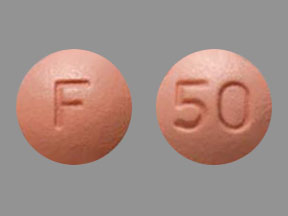Galantamine Disease Interactions
There are 6 disease interactions with galantamine.
Cholinesterase inhibitor (applies to galantamine) bradycardia
Major Potential Hazard, Moderate plausibility. Applicable conditions: Arrhythmias
Due to their pharmacological action, cholinesterase inhibitors can have a vagotonic effect on the sinoatrial and atrioventricular nodes producing bradycardia or heart block. Therapy with cholinesterase inhibitors should be administered cautiously in patients with preexisting bradycardia or underlying cardiac conduction abnormalities. Syncopal episodes have been reported. Atropine may be used to reverse bradycardia produced by cholinesterase inhibitors.
Cholinesterase inhibitor (applies to galantamine) bronchospasm
Major Potential Hazard, Moderate plausibility. Applicable conditions: Chronic Obstructive Pulmonary Disease, Asthma
Cholinesterase inhibitors inhibit the hydrolysis of acetylcholine. The enhanced effect of acetylcholine produces constriction of the bronchi, increased bronchial secretions, and bronchospasm. Therapy with cholinesterase inhibitors should be administered cautiously in patients with respiratory dysfunction, history of asthma, or obstructive pulmonary disease. Respiratory function should be closely monitored for the occurrence of respiratory adverse reactions. Use of atropine along with discontinuation of the cholinesterase inhibitor may be required for serious respiratory distress.
Cholinesterase inhibitor (applies to galantamine) PUD
Moderate Potential Hazard, Moderate plausibility. Applicable conditions: Peptic Ulcer
The use of cholinesterase inhibitors is associated with an increase in gastric acid secretion and gastric contractions. Monitor for symptoms of active or occult gastrointestinal bleeding, especially in patients at increased risk for developing ulcers (e.g., history of ulcer disease or concurrent use of nonsteroidal anti-inflammatory drugs).
Cholinesterase inhibitor (applies to galantamine) seizures
Moderate Potential Hazard, Moderate plausibility.
Cholinesterase inhibitors have been associated with convulsions and tremor. Therapy with cholinesterase inhibitors should be administered cautiously in patients with seizure disorders. Patients with Alzheimer's disease should be closely monitored for seizures.
Galantamine (applies to galantamine) hepatic impairment
Moderate Potential Hazard, Moderate plausibility. Applicable conditions: Liver Disease
In patients with moderate hepatic impairment (Child-Pugh score of 7 to 9), the dosage of galantamine or benzgalantamine should generally not exceed 16 mg/day or 20 mg/day, respectively. The use of galantamine or benzgalantamine in patients with severe hepatic impairment (Child-Pugh score of 10 to 15) is not recommended.
Galantamine (applies to galantamine) renal impairment
Moderate Potential Hazard, Moderate plausibility. Applicable conditions: Renal Dysfunction
In patients with creatinine clearance of 9 to 59 mL/min, the dosage of galantamine or benzgalantamine should generally not exceed 16 mg/day or 20 mg/day, respectively. In patients with creatinine clearance less than 9 mL/min, the use of galantamine or benzgalantamine is not recommended.
Switch to professional interaction data
Galantamine drug interactions
There are 445 drug interactions with galantamine.
Galantamine alcohol/food interactions
There is 1 alcohol/food interaction with galantamine.
More about galantamine
- galantamine consumer information
- Check interactions
- Compare alternatives
- Pricing & coupons
- Reviews (16)
- Drug images
- Side effects
- Dosage information
- During pregnancy
- Drug class: cholinesterase inhibitors
- En español
Related treatment guides
Drug Interaction Classification
| Highly clinically significant. Avoid combinations; the risk of the interaction outweighs the benefit. | |
| Moderately clinically significant. Usually avoid combinations; use it only under special circumstances. | |
| Minimally clinically significant. Minimize risk; assess risk and consider an alternative drug, take steps to circumvent the interaction risk and/or institute a monitoring plan. | |
| No interaction information available. |
See also:
Further information
Always consult your healthcare provider to ensure the information displayed on this page applies to your personal circumstances.


